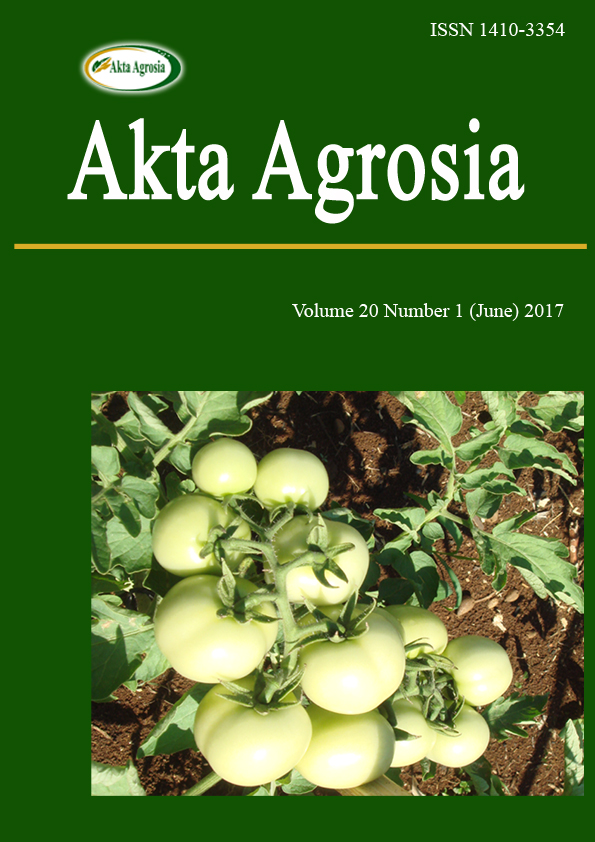Main Article Content
Abstract
Genetic variability is a measure of the variation in plant performance caused by genetic factors. if the variability of plant character is attributable to genetic roles then the variability will be inherited in the next generation. Heritability is a genetic parameter used to measure the ability of a genotype in plant population to transmit its character. Heritability in a broad sense is defined as the ratio between genotype variance and phenotype variance. This study aimed to estimate the values of genetic variability and heritability of growth and yield of 26 plant genotypes tomato. The experiment was conducted from August to December 2016 in Wirehouse, Faculty of Agriculture, University of Bengkulu. The design used in this study was Randomized Complete Block Design (RCBD) with one factor which were 26 tomato genotypes and were repeated three times. Each plant was observed according to the variability and heritability guidelines for the observation variables. The results showed that the growth component of tomato plants that have wide genetic variability and high heritability of the broad sense was found in the characters of plant height, whereas the yield component were found on fruit diameter , crack fruit, and nonmarketable fruit. Selection of tomato plants should be directed to the characters of plant height, fruit diameter, the number of crack fruit, and non-marketable fruit.
Akta
Article Details
Copyright (c) 2017 Nilawati Nilawati, Dwi Wahyuni Ganefianti, D. Suryati

This work is licensed under a Creative Commons Attribution-ShareAlike 4.0 International License.
Authors who publish with this journal agree to the following terms:
- Authors retain copyright and grant the journal right of first publication with the work simultaneously licensed under a Creative Commons Attribution License that allows others to share the work with an acknowledgement of the work's authorship and initial publication in this journal.
- Authors are able to enter into separate, additional contractual arrangements for the non-exclusive distribution of the journal's published version of the work (e.g., post it to an institutional repository or publish it in a book), with an acknowledgement of its initial publication in this journal.
- Authors are permitted and encouraged to post their work online (e.g. in institutional repositories or on their website) prior to and during the submission process, as it can lead to productive exchanges, as well as earlier and greater citation of published work (See The Effect of Open Access).
